At a glance
Boeing is fully confident in the 787 Dreamliner because of the comprehensive work done to ensure the quality and long-term safety of the aircraft. Claims about the structural integrity of the 787 are inaccurate.
The issues raised have been subject to rigorous engineering examination under U.S. Federal Aviation Administration oversight. This analysis has validated that the aircraft will maintain its durability and service life over several decades, and these issues do not present any safety concerns.
Boeing continues to monitor these issues under established regulatory protocols and encourages all employees to speak up when issues arise. Retaliation is strictly prohibited at Boeing.


As of April 2024, the 787 Dreamliner family has safely transported more than 875 million passengers on more than 4.2 million revenue flights

165,000 flight cycles of simulated in-service conditions during rigorous testing phases, 3.75 times the design service objective, with no findings of composite airframe fatigue

The highest-cycle 787 in service has accumulated about 16,500 flight cycles since 2012
787 Dreamliner structural testing program
The multiyear 787 full-scale test program, from August 2010 to September 2015, was more robust than any conducted on a previous Boeing commercial airplane. While the FAA and other regulatory authorities require the company to do this testing for certification, Boeing has its own more demanding standards for certain parameters. Testing is taken very seriously because it gives the company and its customers confidence for the life of the program.
To confirm performance and life cycle of the composite 787 fuselage, Boeing tested a full-scale airplane and a forward fuselage section simulating up to 165,000 flight cycles, including pressurization, – about 3.75 times the jet’s design service objective– with no findings of composite airframe fatigue. The cycles of pressurization and depressurization are the contributors to fatigue on metal airplanes. In service, a 787 currently flies about 600 flight cycles per year on average and will operate safely for many decades before retirement.
Supported by a 1.2 million-pound (544,000-kilogram) test rig, the airplane’s wings, fuselage and tail were attached to load fittings. Hydraulic jacks then applied loads to the airplane, which pushed and pulled the wings and fuselage to simulate all phases of flight and evaluated the durability of the airplane in a variety of conditions over lifetimes of service. During each second of testing, thousands of data points were collected to ensure all parts of the airplane performed as expected.
With data analyzed during five years of fatigue testing, Boeing validated the robustness of the airplane and applied learnings to fine-tune maintenance recommendations for customers. Test results validated earlier modeling and associated expectations about the robustness of the 787 design and composite fuselage.
Additionally, from September 2008 through March 2010, Boeing completed static tests of the airplane structure, where the airframe was first subjected to limit load, the highest loads any airplane would encounter in service. Next, during ultimate load testing, the airplane was subjected to 150% of the highest loads any airplane would encounter in service. The wings were flexed upward by about 25 feet (7.6 meters), and the fuselage was pressurized to 150% of its maximum operating condition.
The full airplane full-scale static test and the full airplane full-scale fatigue test were performed in addition to many other static and fatigue tests, including major fuselage sections and outboard wing, as well as more than 100,000 smaller-scale tests.
Watch: 787 Fatigue Testing
Photos: 787 Static and Fatigue Testing
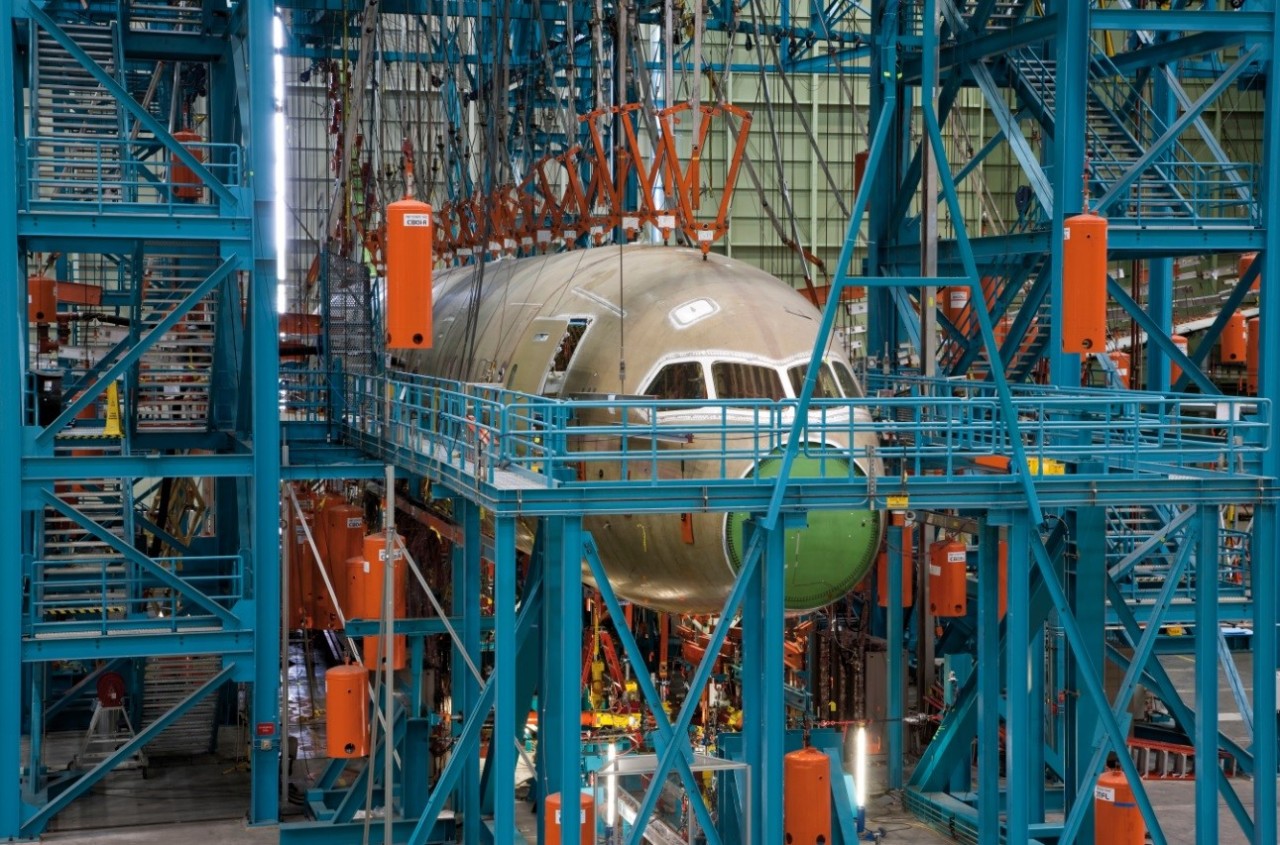 The Boeing 787 Dreamliner static test airplane is shown loaded into a sophisticated testing fixture, subjecting the airframe to extreme loads. Engineers analyzed the results to ensure the first 787 was ready for flight test. The data gathered was also used by the Federal Aviation Administration in certifying the airplane.
The Boeing 787 Dreamliner static test airplane is shown loaded into a sophisticated testing fixture, subjecting the airframe to extreme loads. Engineers analyzed the results to ensure the first 787 was ready for flight test. The data gathered was also used by the Federal Aviation Administration in certifying the airplane.
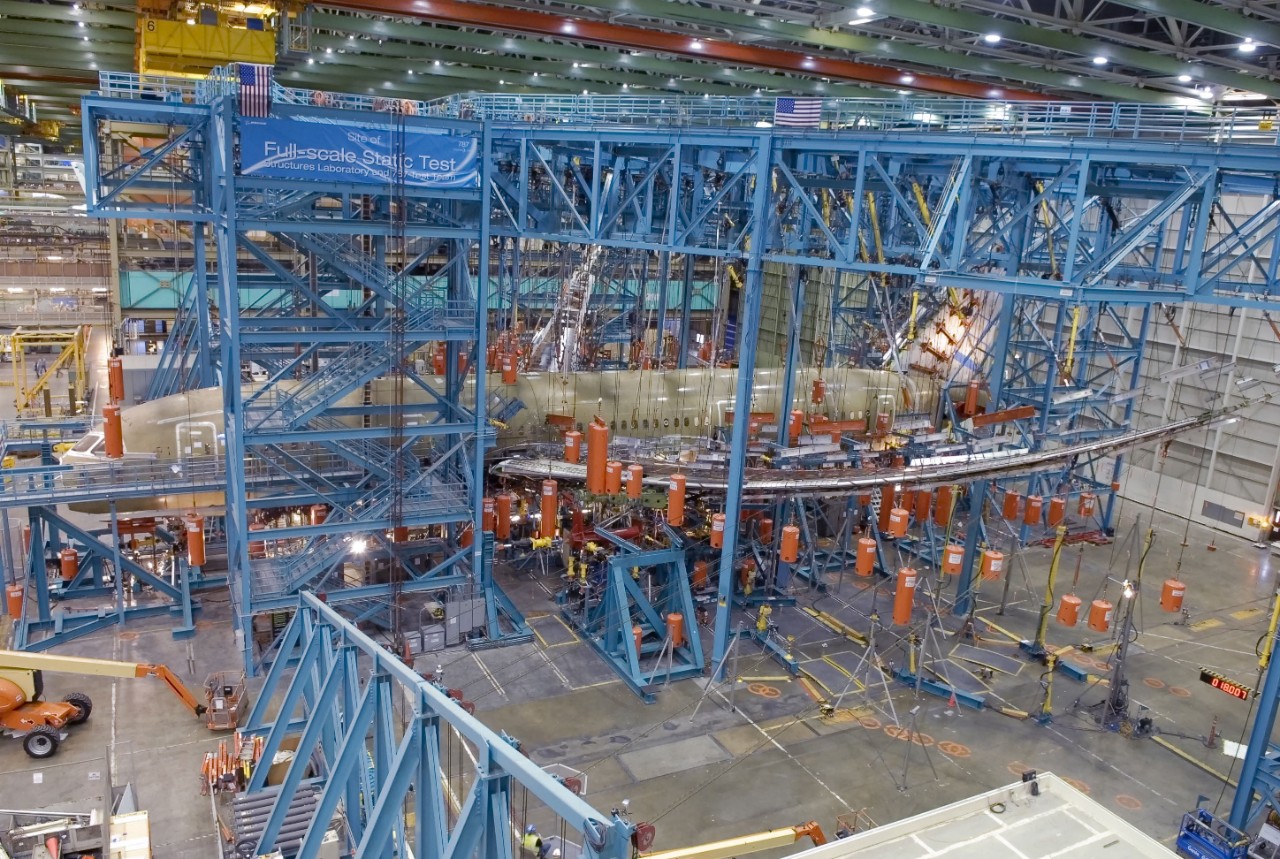 The Boeing 787 Dreamliner static test airplane is shown loaded into a sophisticated testing fixture, subjecting the airframe to extreme loads. Engineers analyzed the results to ensure the first 787 was ready for flight test. The data gathered was also used by the Federal Aviation Administration in certifying the airplane.
The Boeing 787 Dreamliner static test airplane is shown loaded into a sophisticated testing fixture, subjecting the airframe to extreme loads. Engineers analyzed the results to ensure the first 787 was ready for flight test. The data gathered was also used by the Federal Aviation Administration in certifying the airplane.
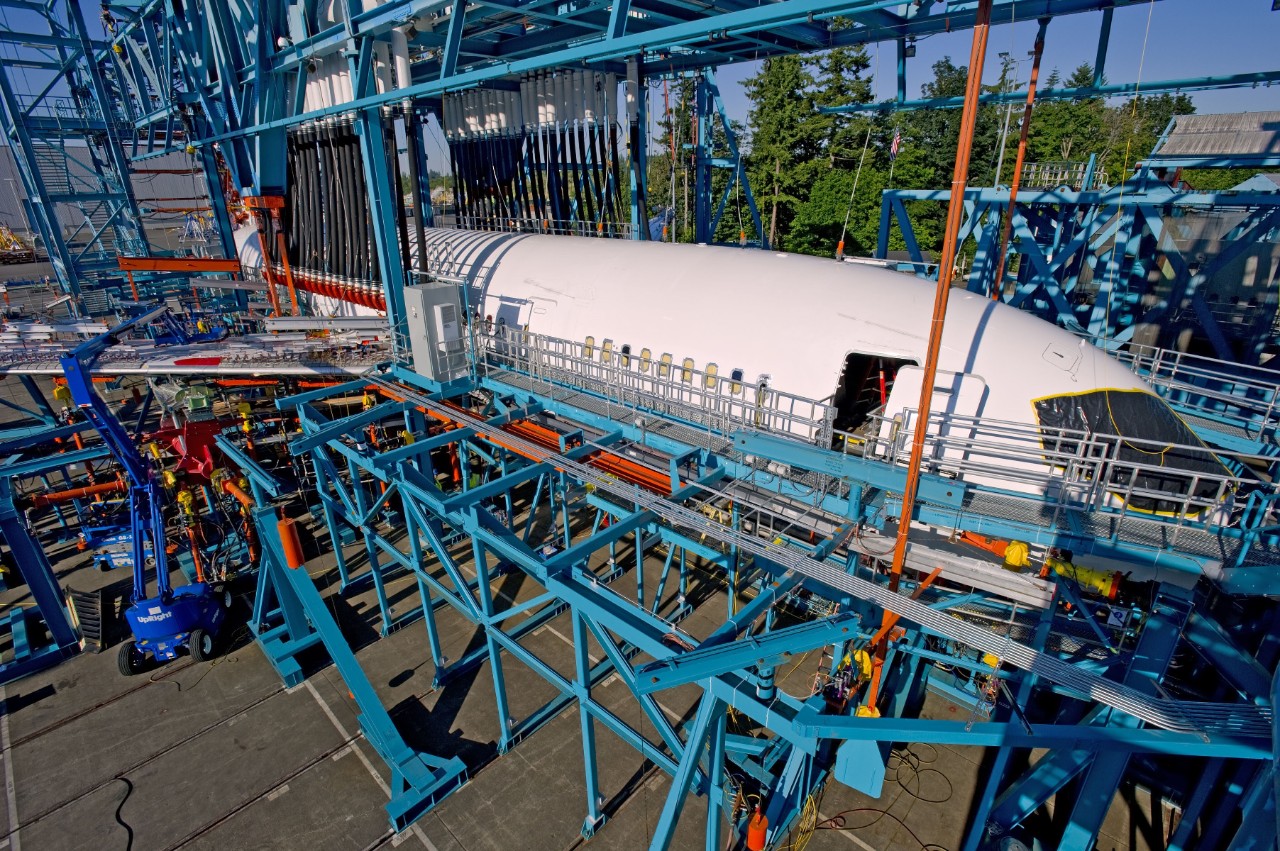 The 787 Dreamliner fatigue test airframe sits in its test rig in Everett. Unlike static tests, in which loads are applied to the airplane structure to simulate both normal and extreme flight conditions, fatigue testing is a much longer process that simulated more than three times the number of flight cycles an airplane is likely to experience during a lifetime of service.
The 787 Dreamliner fatigue test airframe sits in its test rig in Everett. Unlike static tests, in which loads are applied to the airplane structure to simulate both normal and extreme flight conditions, fatigue testing is a much longer process that simulated more than three times the number of flight cycles an airplane is likely to experience during a lifetime of service.
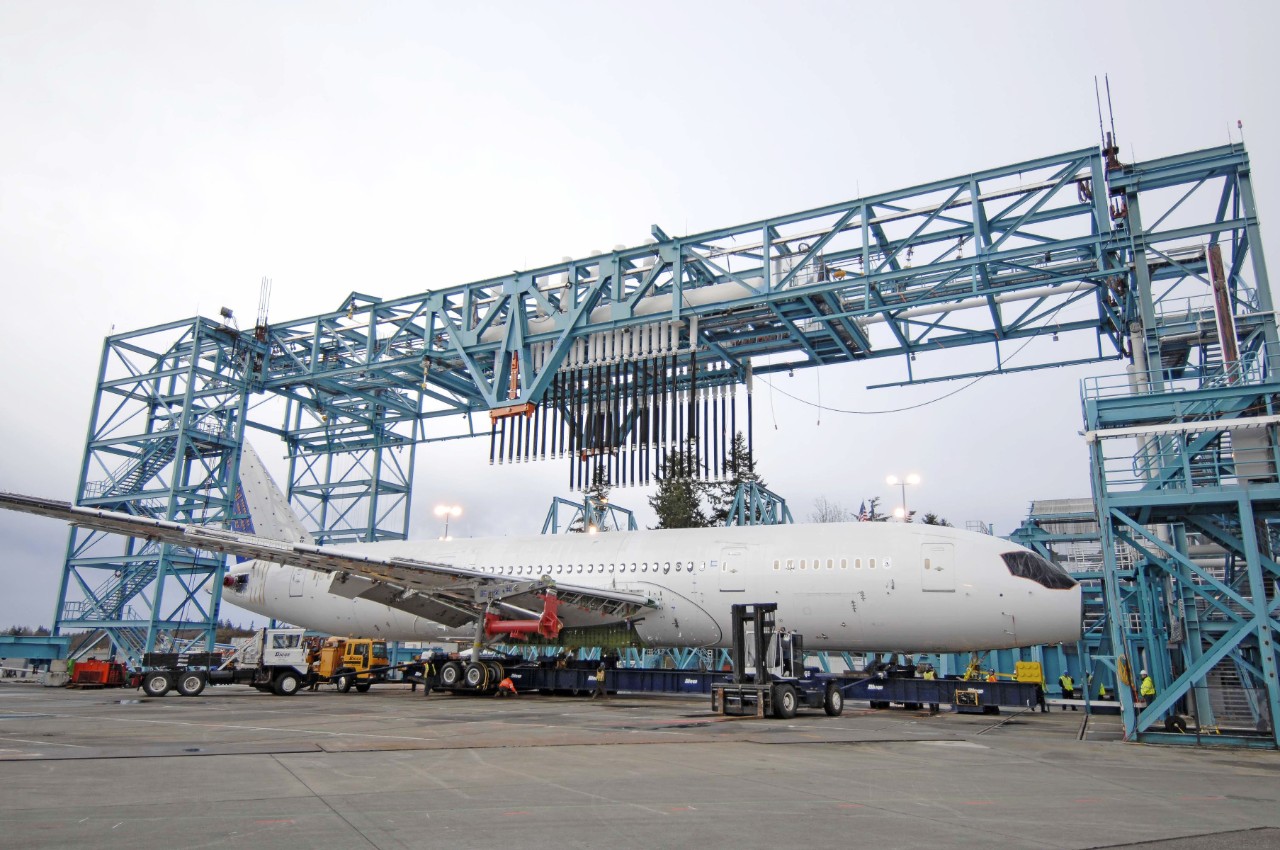 The 787 Dreamliner fatigue test airframe sits in its test rig in Everett. Unlike static tests, in which loads are applied to the airplane structure to simulate both normal and extreme flight conditions, fatigue testing is a much longer process that simulated more than three times the number of flight cycles an airplane is likely to experience during a lifetime of service.
The 787 Dreamliner fatigue test airframe sits in its test rig in Everett. Unlike static tests, in which loads are applied to the airplane structure to simulate both normal and extreme flight conditions, fatigue testing is a much longer process that simulated more than three times the number of flight cycles an airplane is likely to experience during a lifetime of service.
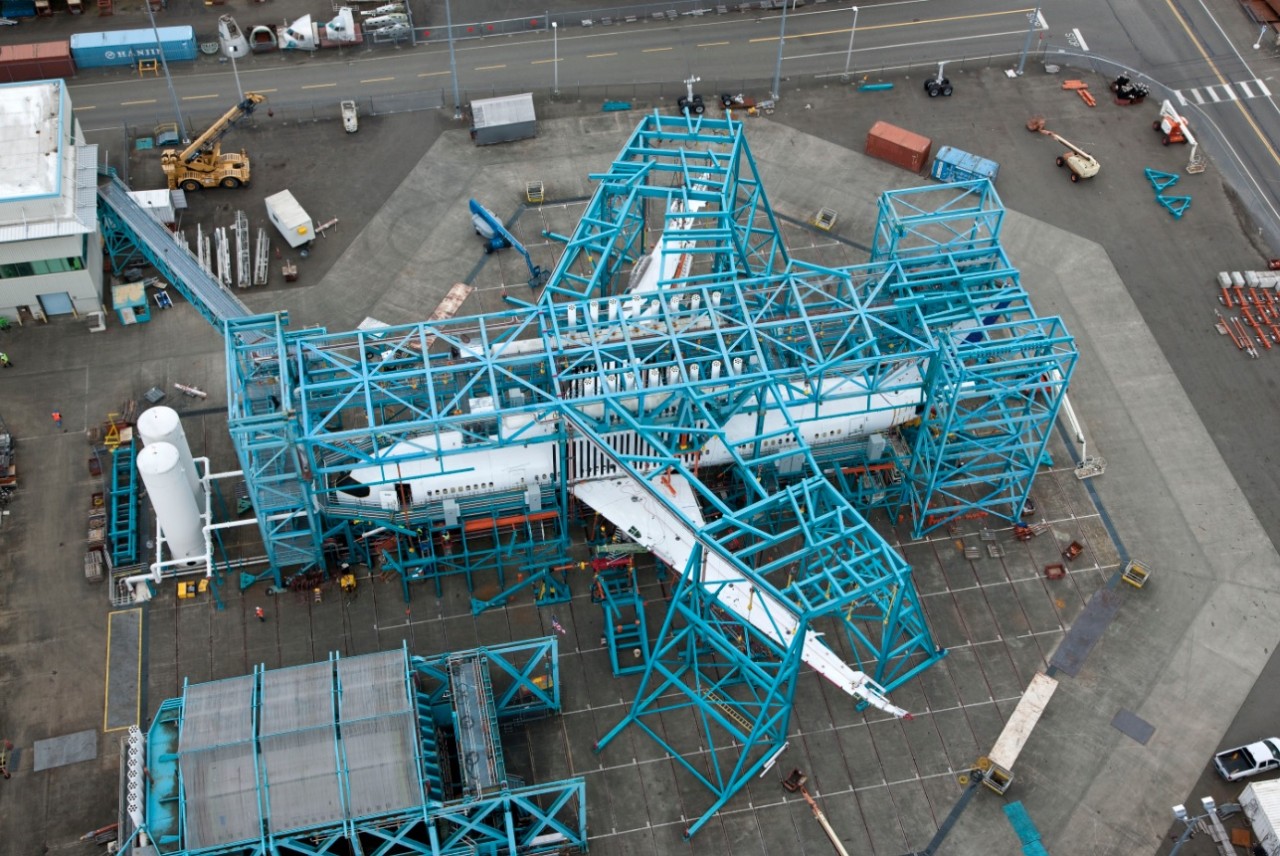 The 787 Dreamliner fatigue test airframe sits in its test rig in Everett. Unlike static tests, in which loads are applied to the airplane structure to simulate both normal and extreme flight conditions, fatigue testing is a much longer process that simulated more than three times the number of flight cycles an airplane is likely to experience during a lifetime of service.
The 787 Dreamliner fatigue test airframe sits in its test rig in Everett. Unlike static tests, in which loads are applied to the airplane structure to simulate both normal and extreme flight conditions, fatigue testing is a much longer process that simulated more than three times the number of flight cycles an airplane is likely to experience during a lifetime of service.
- Static image
- Static image
- Fatigue image
- Fatigue image
- Fatigue image
787 manufacturing
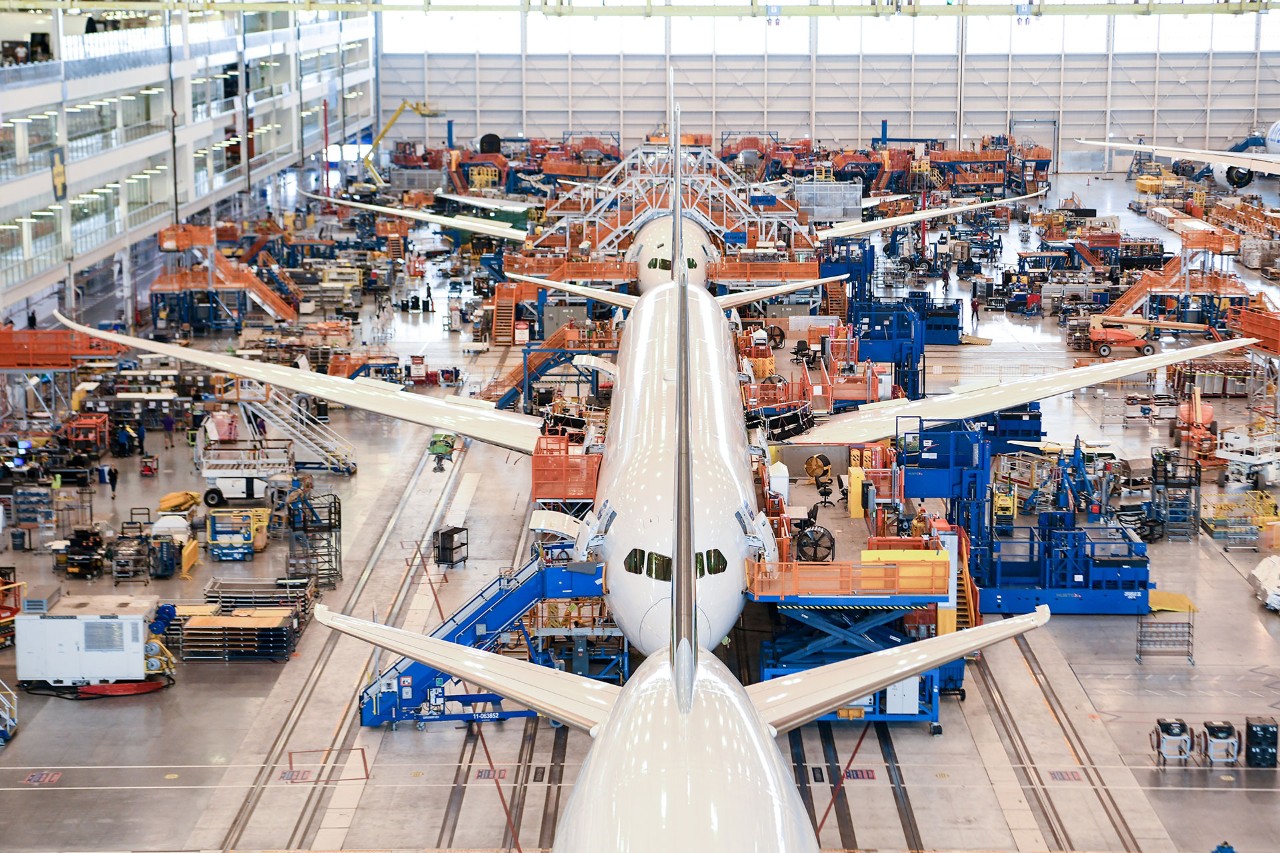
Based on the data analysis from this extensive fatigue testing, a 787 can safely operate for more than 30 years before it would need to enter more conservative maintenance routines for extended service. The full-service life could be as long as 40 to 50 years, depending on the operator and their maintenance plan.
Since the 787 program launched 20 years ago, Boeing has worked to improve production processes and incorporate the latest manufacturing techniques. This continuous improvement has resulted in higher quality and has had no impact on durability or safe longevity of the airframe. The Boeing team’s work has included exhaustive testing and analysis to ensure that manufacturing process updates maintain the performance, full projected lifespan and strength of the airplane.
There are thousands of different join-up points across the airplane. Boeing has detailed design specifications that define allowable gaps and fit-up force at any given join. Fit-up forces are the forces applied to parts to ensure they mate up properly prior to any shimming or assembly. This force can vary from join to join and location to location. The comprehensive approach used to evaluate improvements to our production process includes and encourages dissenting viewpoints. This work has been completed with full transparency and under the oversight of the FAA.
787 join verification
From October 2020 to August 2022, as a result of employees identifying potential issues on the 787, Boeing slowed production and stopped delivering 787s to ensure each airplane met its exacting engineering specifications. Boeing incorporated the join inspection and verification activity into the production system so that airplanes coming off of the production line meet these specifications.
For the in-service fleet, based on comprehensive analysis no safety issues have been identified related to composite gap management and our engineers are completing exhaustive analysis to determine any long-term inspection and maintenance required, with oversight from the FAA. Based on the analysis and any future inspection, the 787 will maintain its strength, durability and service life.
787 testing timeline
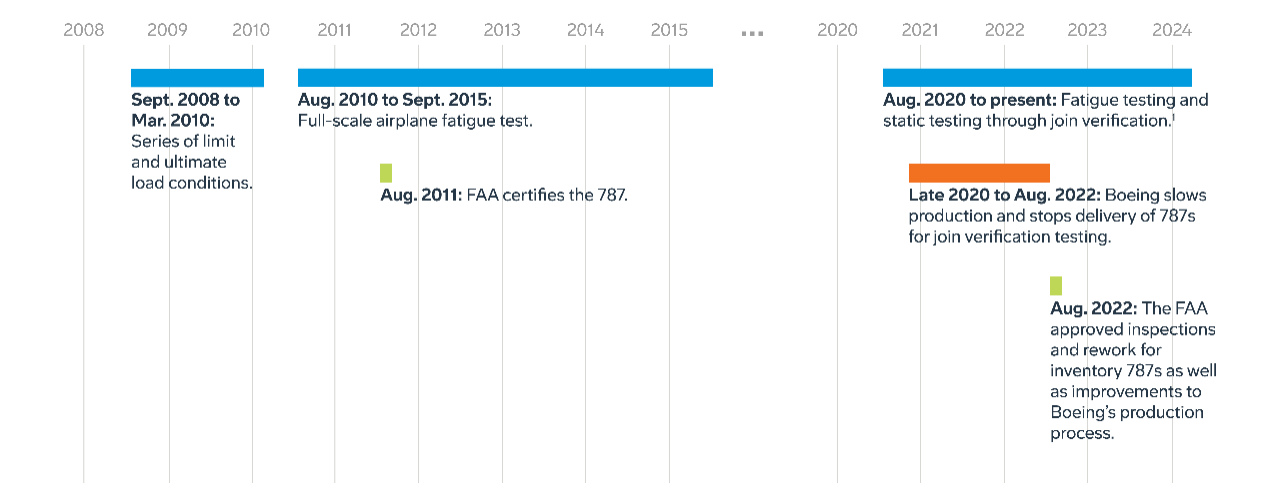
1This included tests, strain gauge monitoring, and analysis of findings.
Flight cycle testing
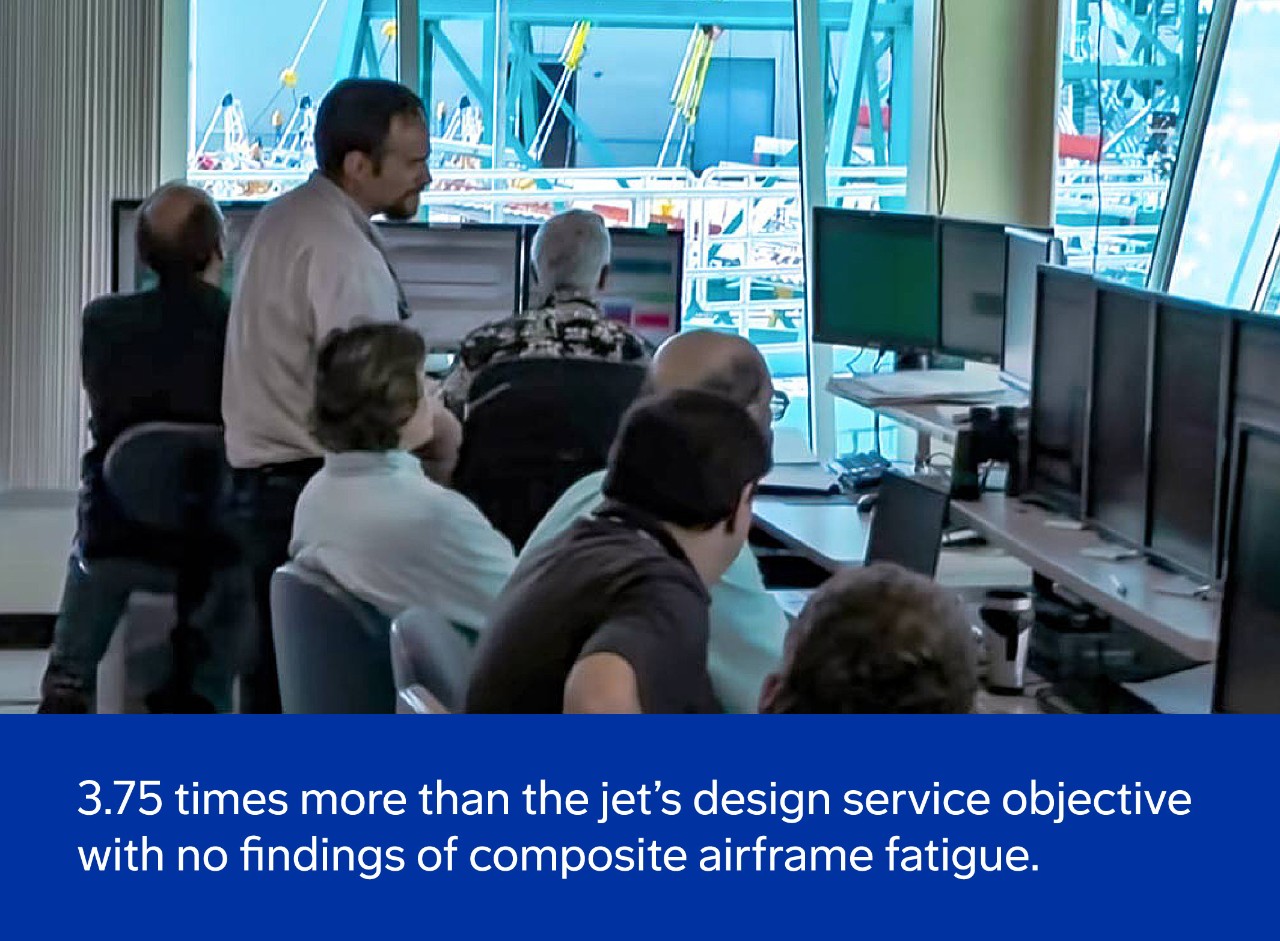
To confirm performance and life cycle of the composite 787 fuselage, Boeing tested a full-scale airplane and a forward fuselage section simulating up to 165,000 flight cycles, including pressurization, – about 3.75 times the jet’s design service objective– with no findings of composite airframe fatigue. The cycles of pressurization and depressurization are the contributors to fatigue on metal airplanes.
Phases of flight testing
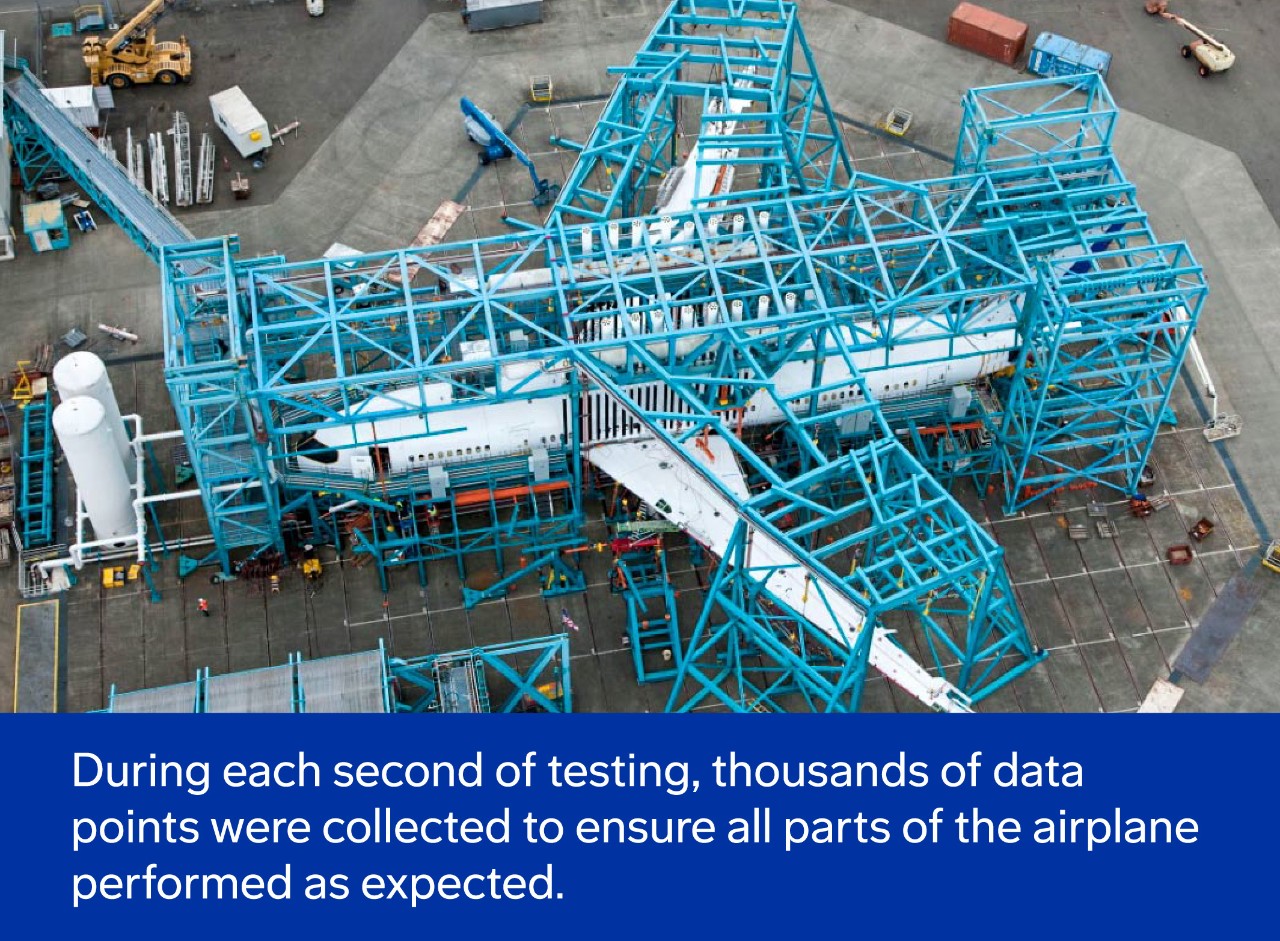
The multiyear 787 full-scale test program, from August 2010 to September 2015, was more robust than any conducted on a previous Boeing commercial airplane. Supported by a 1.2 million-pound (544,000-kilogram) test rig, the airplane’s wings, fuselage and tail were attached to load fittings. Hydraulic jacks then applied loads to the airplane, which pushed and pulled the wings and fuselage to simulate all phases of flight and evaluated the durability of the airplane in a variety of conditions over lifetimes of service. During each second of testing, thousands of data points were collected to ensure all parts of the airplane performed as expected.
Fostering transparency and openness
Safety and quality are core values at Boeing. We design and build all our airplanes to meet rigorous engineering specifications and FAA requirements, ensuring compliance with safety standards. We continuously propose improvements, supported by extensive data and testing, with oversight from the FAA for approval. Our culture fosters transparency, accountability and open communication, empowering employees to speak up through our confidential reporting channel, Speak Up. Reported concerns are thoroughly reviewed, and we take action while strictly prohibiting retaliation. We are committed to maintaining the highest levels of safety and quality through open dialogue and continuous improvement.
Media statements
“In 13 years of service, the global 787 fleet has safely transported more than 850 million passengers on more than 4.2 million flights. A 787 can safely operate for at least 30 years before needing expanded airframe maintenance routines. Extensive and rigorous testing of the fuselage and heavy maintenance checks of nearly 700 in-service airplanes to date have found zero evidence of airframe fatigue. Under FAA oversight, we have painstakingly inspected and reworked airplanes and improved production quality to meet exacting standards. We are fully confident in the safety and durability of the 787 Dreamliner.”
“With three decades of innovation in design and production, the 777 fleet has safely flown more than 3.9 billion passengers around the world. We are fully confident in the safety of the 777, which remains the most successful widebody airplane family in aviation history.”
“From October 2020 to August 2022, as a result of employees identifying and sharing conformance items on the 787, we slowed production and stopped delivering nearly all 787s to take our time to get things right and ensure each met our exacting engineering specifications. We incorporated the join inspection and verification activity into our production system so that airplanes coming off of the production line meet these specifications. For the in-service fleet, comprehensive Boeing and FAA analysis determined there is no near-term safety of flight concern, and our engineers are completing exhaustive analysis to determine any long-term inspection and maintenance required, with oversight from the FAA. Based on the analysis and any future inspection, the 787 will maintain its strength, durability and service life.”

